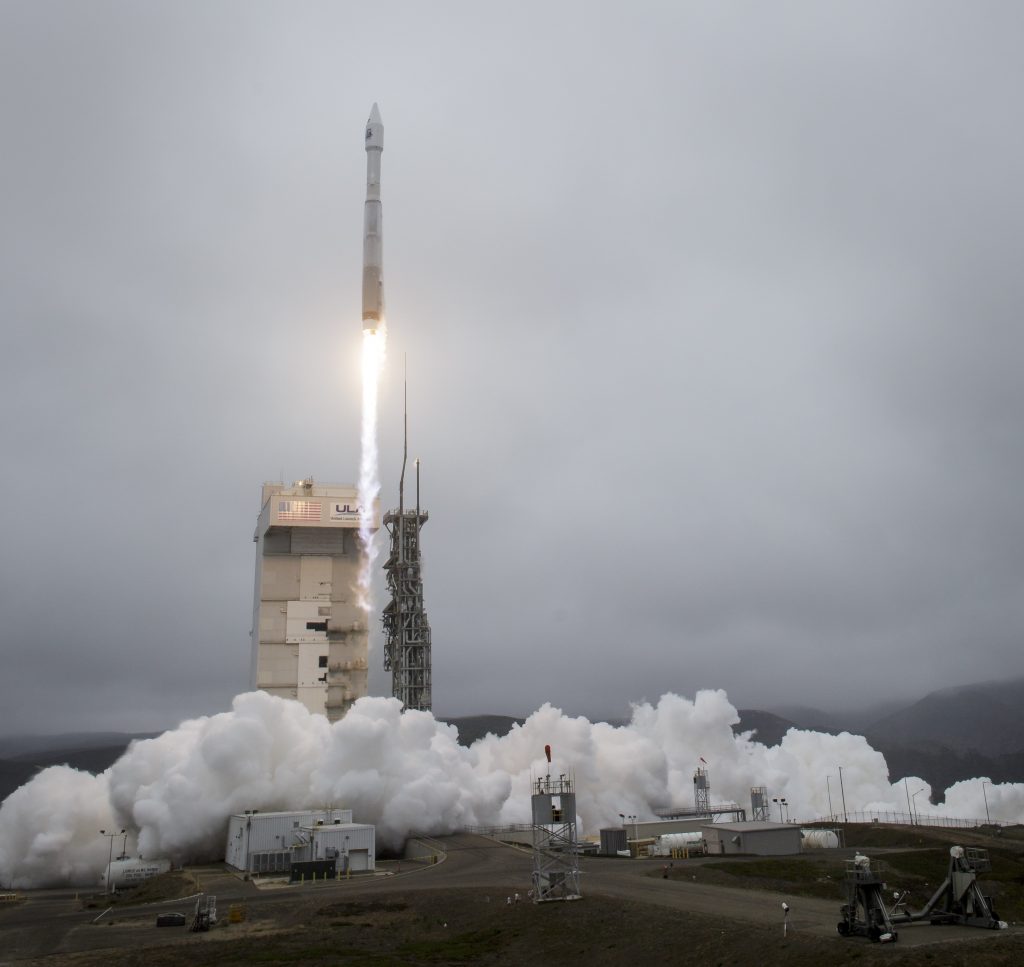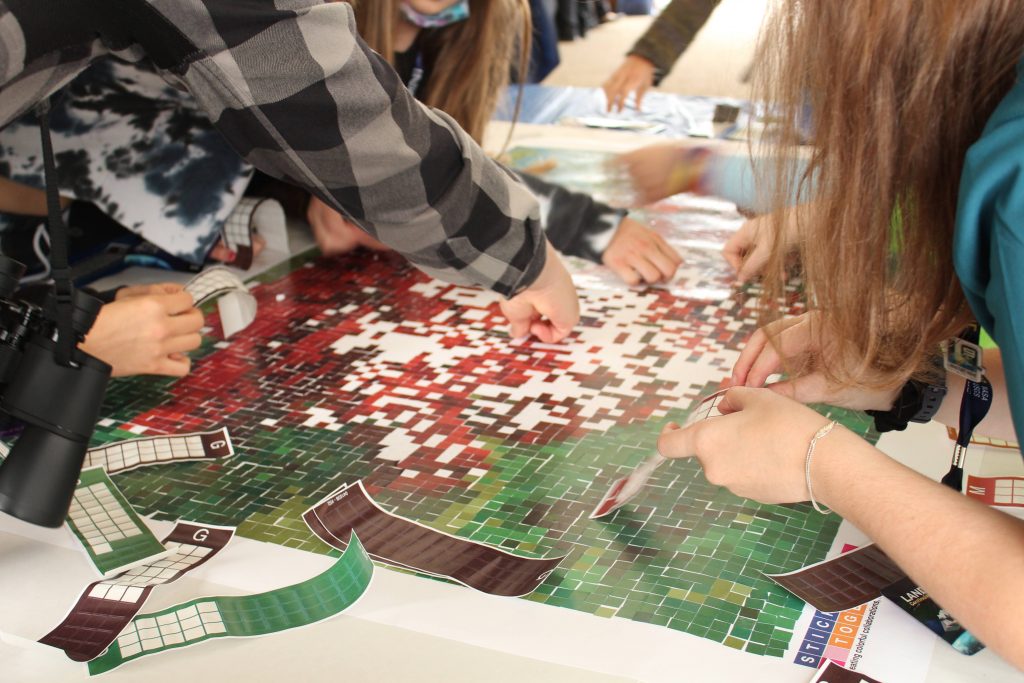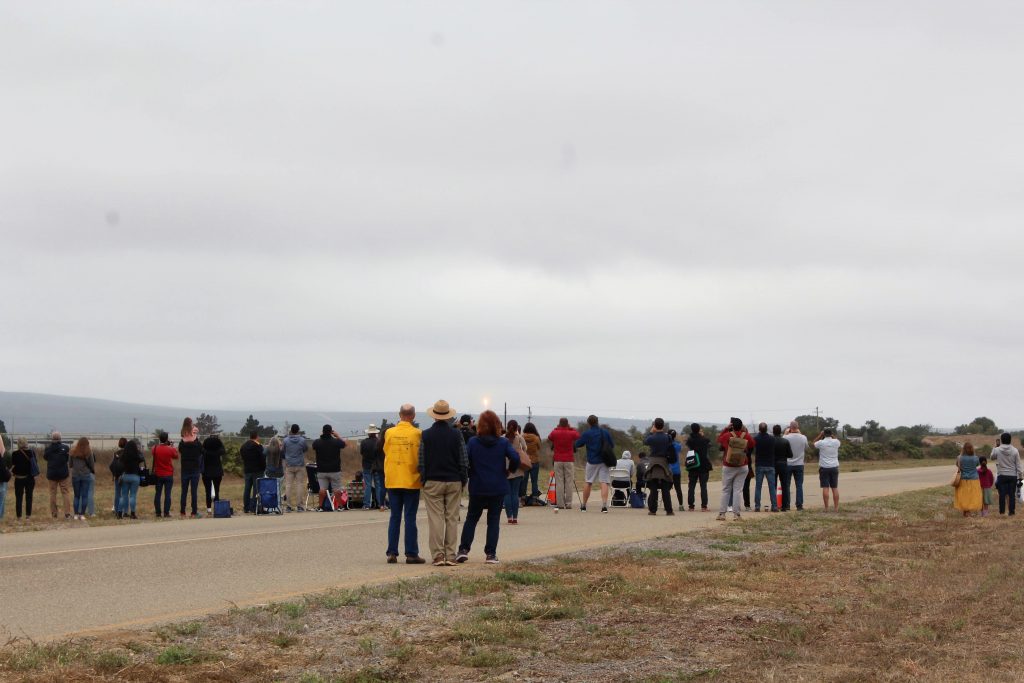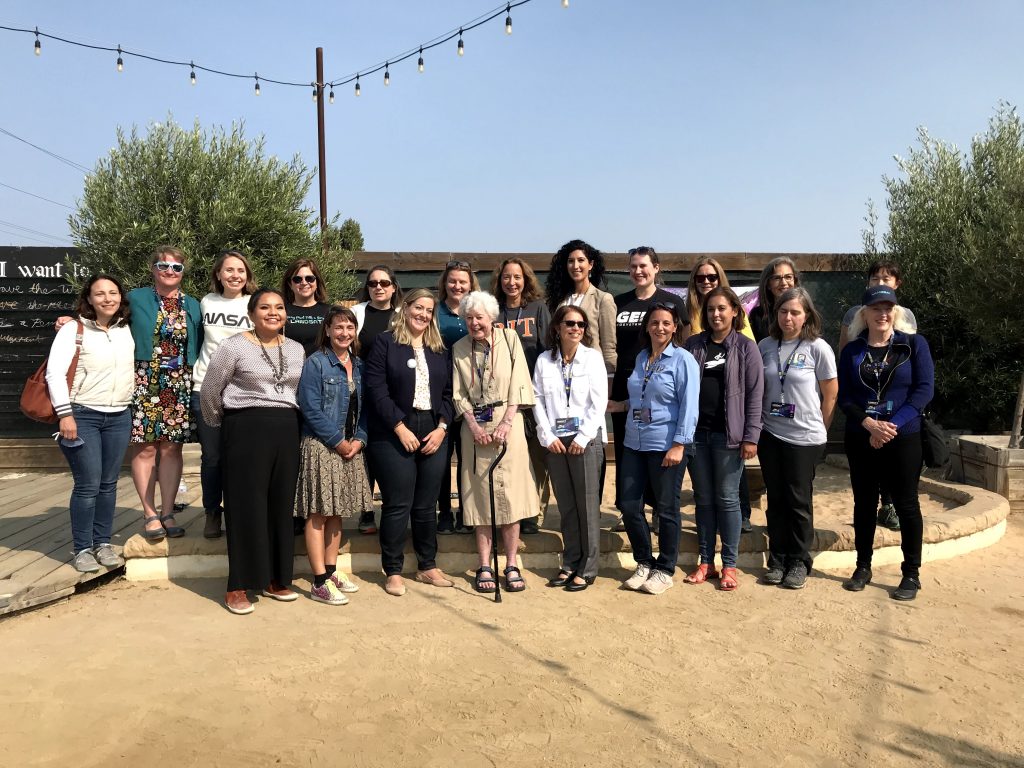
By Jessica Merzdorf Evans //LOMPOC, CALIFORNIA//
11AM, Lompoc Airport
Launch day dawned gray and cool, with low-hanging cloud cover and a light drizzle. While the launch crew ran through their final procedures and checks before launch, I went to the public viewing site at Lompoc Airport, where several tents’ worth of activities and a “not-quite-life-sized” cutout of Landsat 9 greeted visitors.
In the activity tents, families were solving floor and table puzzles with Landsat imagery, while members of the outreach team helped kids make colorful mosaic art, use “pixel” stickers to reconstruct an image, and understand how satellites measure sea ice.

Ten minutes before launch, the tents started to empty out as people moved toward the open airport runway that pointed toward the launch site, about 10 miles away. I moved into the VIP viewing area reserved for NASA personnel and invitees. Some settled in for a view from bleachers or sheltered under a tent; some trekked far down the empty runway. I decided to head down the runway and try to get a glimpse of the Atlas V rocket as it cleared the launch pad.
Because of the low-hanging clouds, our view of the launch was three seconds of bright flaming light on the horizon before the rocket was swallowed up in the gray sky. Even from ten miles away, however, I could see the exhaust clouds billowing up from the launch pad and hear the earth-shaking, deep bass roar of the powerful engines powering the rocket toward orbit.
The gathered crowd strained their eyes eagerly toward the sky, hoping to catch a glimpse of the rocket as it hurtled toward space. Some people embraced as they felt the sound wash over them; some pointed or shaded their eyes; some cheered and clapped, while others stood quietly to listen to the rocket’s roar arcing high into the sky and overhead.

The payload and booster reached orbit about 16 minutes after launch, and Landsat 9 separated from its booster about an hour later, joining Landsat 8 and the rest of NASA’s Earth-observing fleet.
One special guest at the airport was Virginia Norwood, affectionately known as the “Mother of Landsat.” Norwood and her team designed and built the Multispectral Scanner System aboard Landsat 1, half a century ago.

Landsat 9 is safely in orbit and ready to start collecting data and taking its place in the nearly 50-year legacy of Landsat Earth observations. But that legacy is not only Landsat’s critical data continuity and technical achievements – it is also the legacy of the engineers, scientists, technicians, and resource managers who keep the program thriving, decade after decade.
